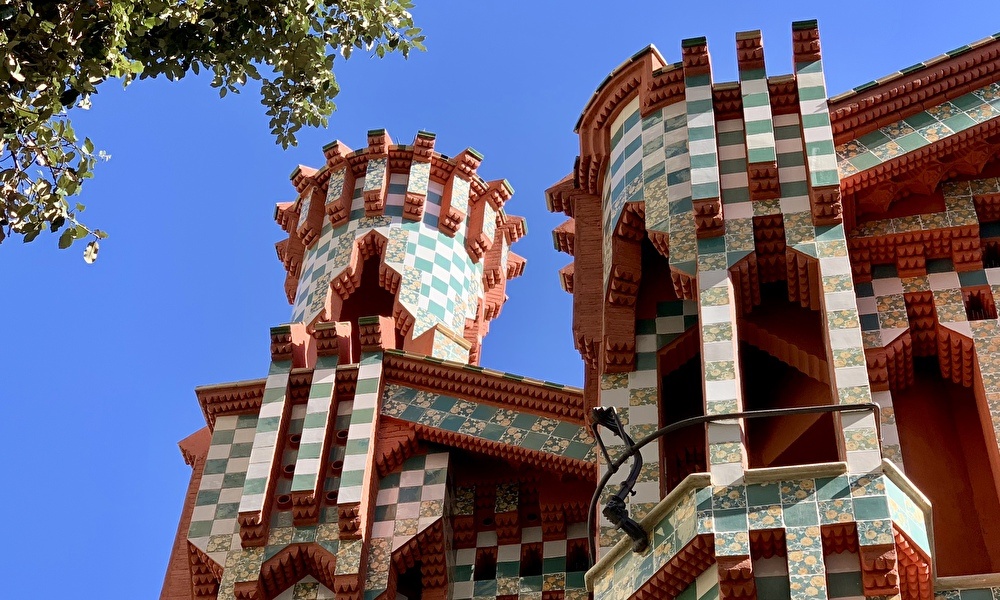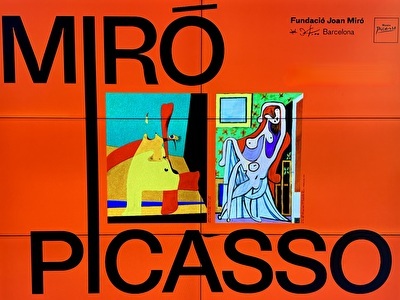Casa Vicens: a colorful beginning of Gaudí’s genius
A visit to Casa Vicens is a journey back to 1883, the year a young, ambitious Gaudí received a commission from the wealthy tile manufacturer Manuel Vicens i Montaner. What he delivered was not a traditional mansion, but an explosion of color, form, and symbolism.
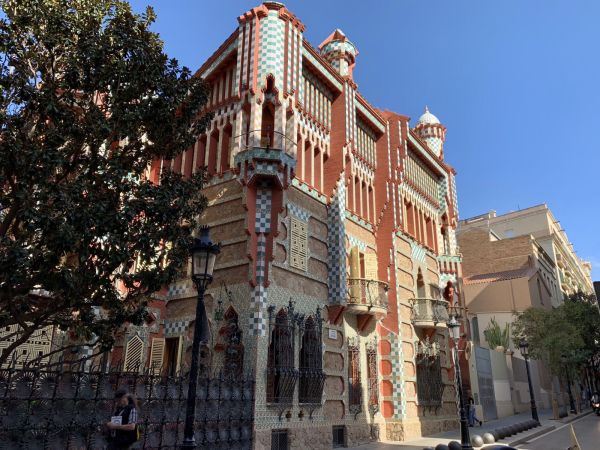
A first look: color, light, and orientation
Even before you step through the door, you are captivated by the façade. While most houses of that period in Barcelona were built of understated natural stone, here Gaudí opted for a vibrant mosaic of red brick, bright green ceramic tiles, and natural stone. The tiles are decorated with yellow and white flowers – African marigolds, a motif Gaudí borrowed from the plants growing in the house's garden.
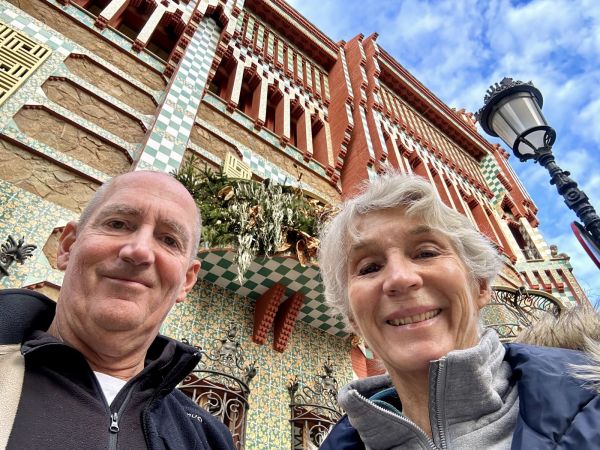
The entire exterior exudes Mediterranean richness, yet a Moorish, oriental influence is also palpable. The geometric patterns, the horseshoe shapes, and the interplay of light and shadow reference the Mudéjar style, which Gaudí reinvented in his own exuberant way.
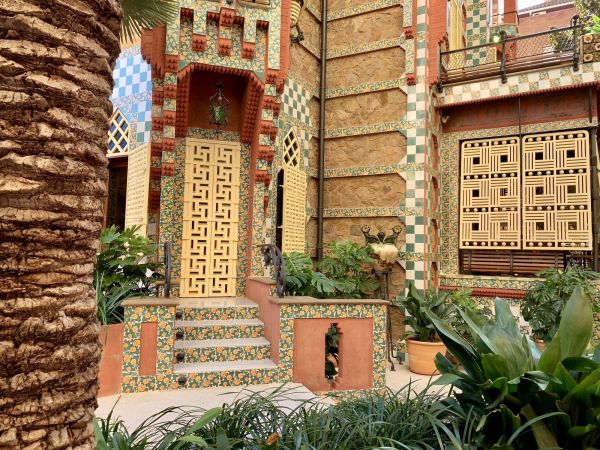
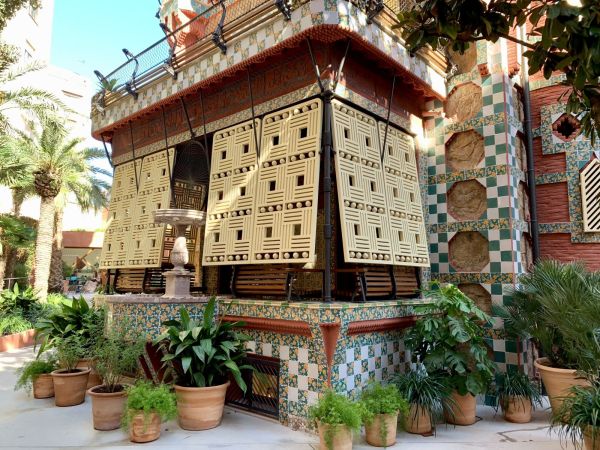
The wrought iron of the gate and balcony balustrades deserves equal attention. Pay close attention to the cast-iron railing with palm branches – a work of art in itself, which would be equally at home outdoors or in a museum.
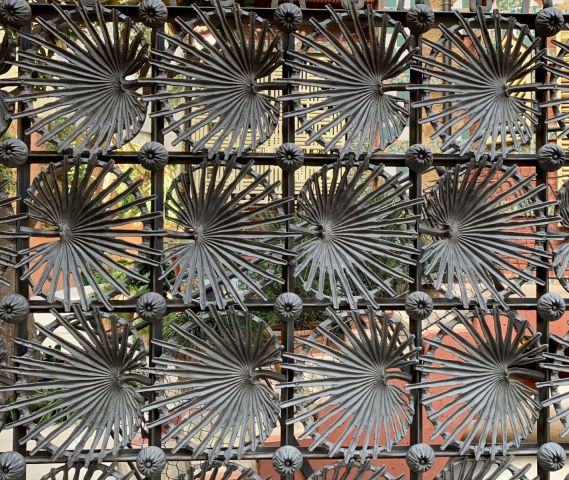
The commission and construction
Manuel Vicens i Montaner inherited the plot of land in Gràcia from his mother in the 1870s. He owned a ceramics and tile business and wanted to build a summer house for himself and his family. Through his network, he came into contact with the then 31-year-old Antoni Gaudí, who had just completed his studies at the Escola Tècnica Superior d’Arquitectura.
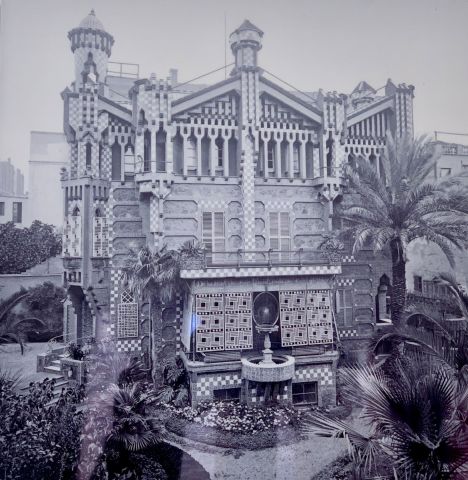
Construction began in 1883 and was completed in 1885. Although Casa Vicens is modest in size, Gaudí unleashed all his innovative ideas on it. He worked closely with skilled craftsmen: masons, ceramicists, woodcarvers, and blacksmiths, making the house a true work of art. Everything—from the facade to the doorknobs—was carefully designed. Interestingly, Casa Vicens predates Gaudí's most famous works: Park Güell, Casa Batlló, La Pedrera, and, of course, the Sagrada Família. Yet, this first house already displays many of the features that would later become his signature: organic forms, the use of natural motifs, and a fusion of art, craftsmanship, and architecture.
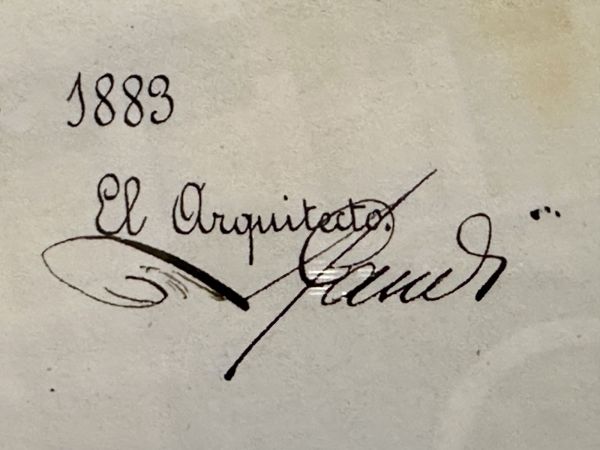
The residents: the Vicens family
The Vicens family used the house primarily as a summer residence. In the 19th century, wealthy families from Barcelona flocked to Gràcia to escape the heat, dust, and bustle of the city. Here, they could enjoy a large garden, shady verandas, and fresh air.
The original Casa Vicens plot included a lush garden with palms, citrus trees, and aromatic plants. Gaudí integrated this garden into his design: the facade motifs, wrought ironwork, and ceramic tiles reflected the flora the residents saw daily.
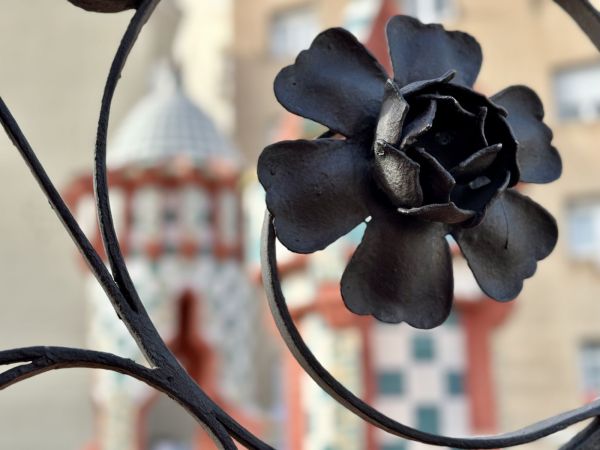
Step inside: a world of patterns and craftsmanship
As soon as you enter the house, you're overwhelmed by the wealth of detail. The interior of Casa Vicens is as eclectic and colorful as the exterior. Gaudí designed ceilings with stucco in three-dimensional floral motifs, wooden beams painted with geometric patterns, and walls covered with relief tiles and paper wallpaper with plant themes.
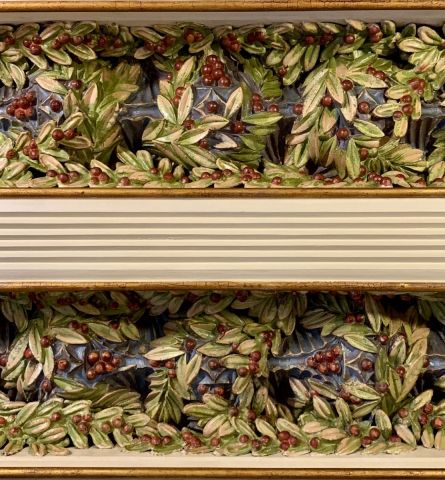
In the smoking room on the ground floor, you'll see perhaps the most striking example of Gaudí's oriental influences. The walls are covered in gilded stucco in blue and gold, incorporating palm leaves and bunches of grapes.
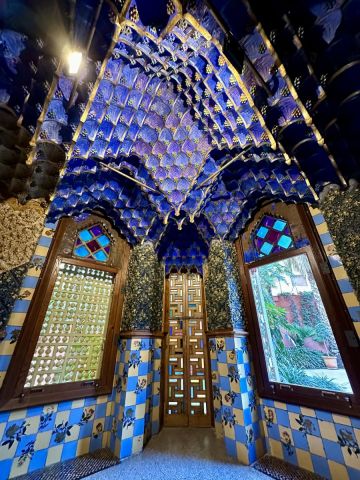
The dining room opens onto a large veranda overlooking what was once the garden. Here, Gaudí used trencadís, the mosaic technique of laying ceramic pieces in irregular patterns. This would later become one of his most famous trademarks, but in Casa Vicens, you can still see its early, refined application.
The ornaments: a modernist Treasure trove
Casa Vicens is often described as a testing ground for Gaudí's later works. Many ornaments were first explored here.
- Ceramic tiles: The green and white tiles with marigolds are perhaps the most iconic element. They are repeated across the entire facade and give the house its cheerful, almost festive appearance.
- Wrought iron: From the fence to the balcony railings and even the small door handles, the ironwork is vibrant, asymmetrical, and inspired by plants and leaves.
- Carvings: The wooden doors and window frames are richly decorated, sometimes with inlays, sometimes with carved floral motifs.
- Stucco and plaster: Ceilings and walls feature reliefs of flowers, fruit, and geometric patterns, often with pops of color.
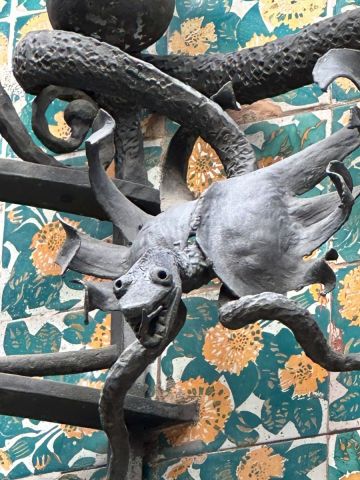
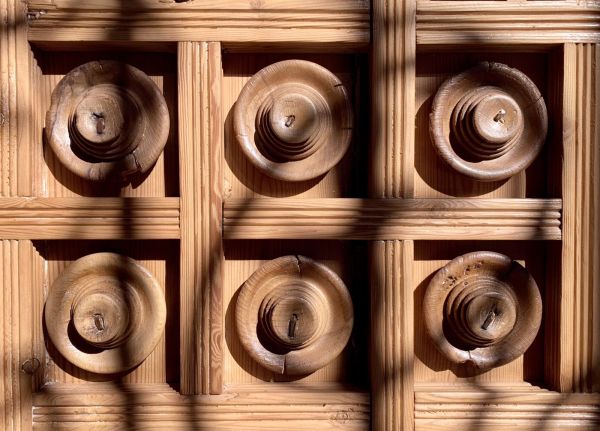
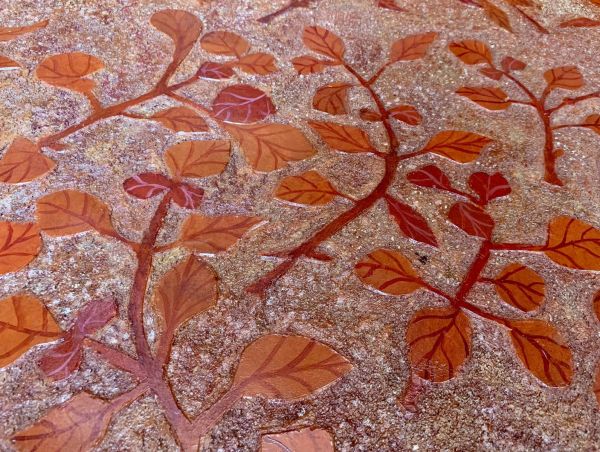
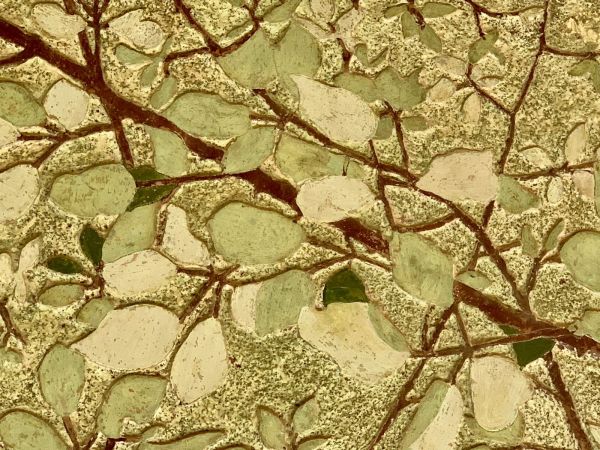
Strikingly, these ornaments are not simply decorative. Each motif has a connection to nature or the environment. Gaudí saw architecture as an extension of the landscape and wanted the interior and exterior to be interconnected.
From private residence to museum
In 2005, Casa Vicens was declared a UNESCO World Heritage Site, as part of the "Works of Antoni Gaudí." This brought renewed attention, and after a thorough restoration, Casa Vicens opened to the public as a museum in 2017.
A visit today
During our visit to Casa Vicens, we noticed that you come not only to look, but also to discover. Every room has something unexpected: a ceiling through which a flock of birds seems to fly, a corner where sunlight streams through colored windows, a balcony overlooking a part of the city barely visible due to the lush wrought iron scrollwork.
What struck us most was how complete this house is as a work of art. It's not a building you take one look at and then move on; you have to absorb it slowly, room by room.
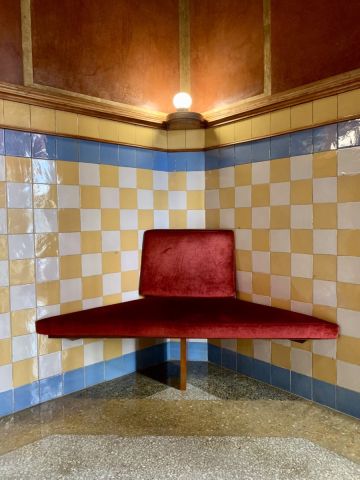
Casa Vicens in Gaudí's oeuvre
Although Casa Vicens is often overshadowed by his later masterpieces, it is actually a key work. Here you see how Gaudí began to develop his own style, free from the conventions of the time. The combination of Moorish, Oriental, and Neo-Gothic influences with natural motifs and innovative techniques is unique.
In contrast to the organic, undulating forms of his later buildings, Casa Vicens still features many straight lines and clear geometry. Yet it is equally imaginative – only packaged within a tighter grid. It demonstrates that Gaudí didn't discover his famous style all at once, but rather developed it step by step.
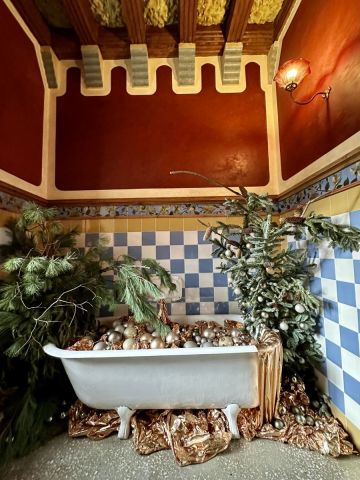
A visit to Casa Vicens is much more than an introduction to Gaudí's first house. It is an encounter with a young architect who explored his boundaries, experimented with materials and styles, and in doing so managed to create a house that still sparkles with creativity. Casa Vicens is therefore not only a monument of brick and ceramics, but also living proof of how a drive for innovation and craftsmanship can combine to produce a masterpiece.
